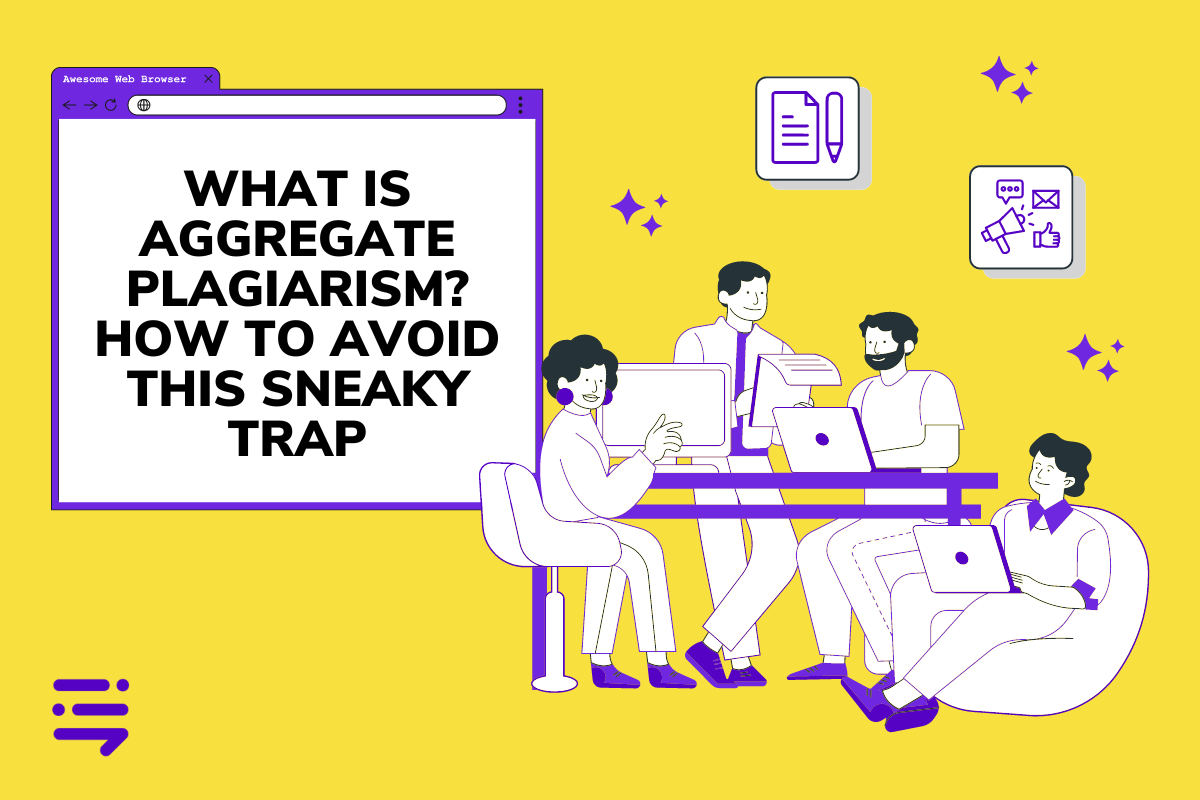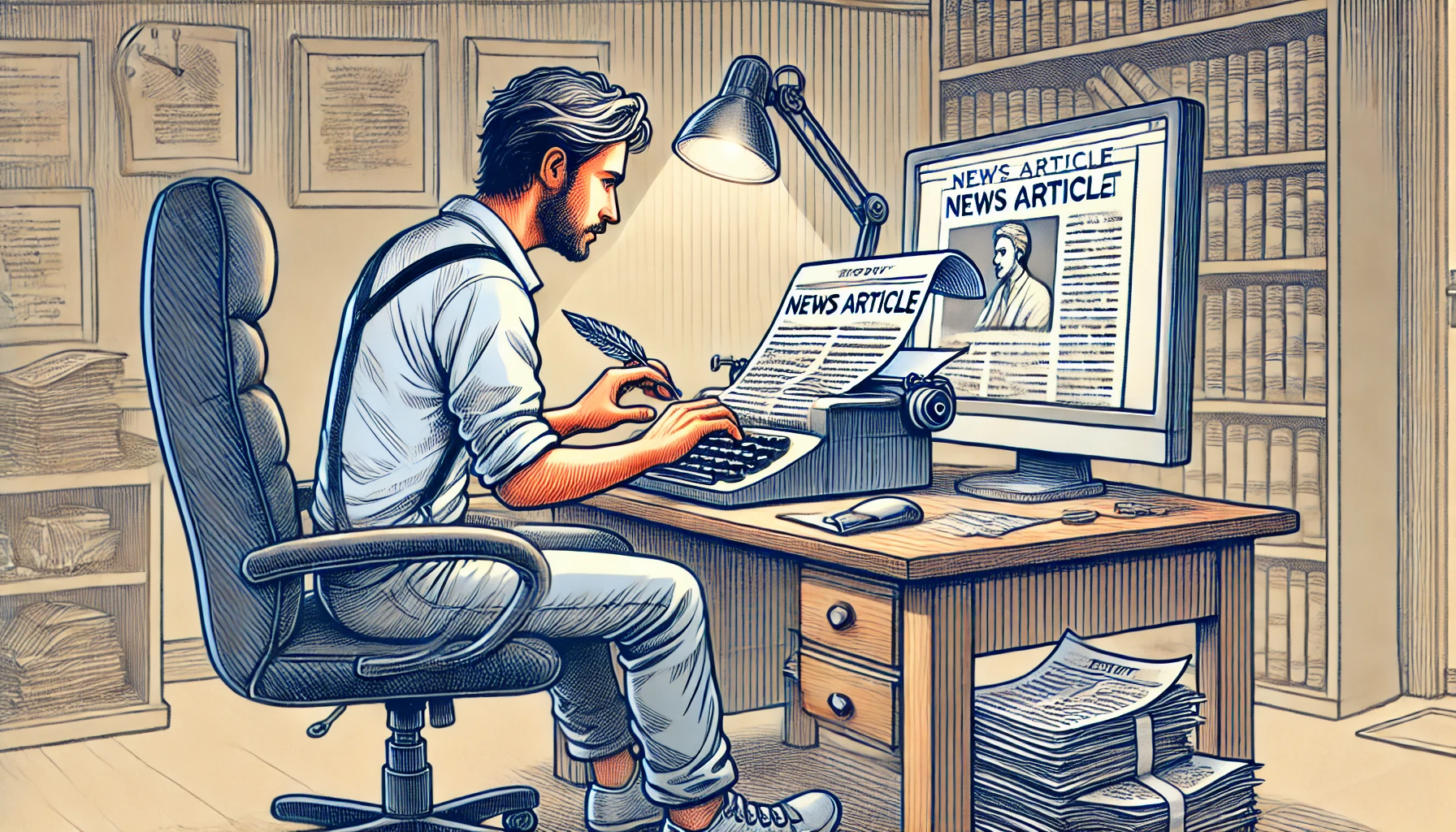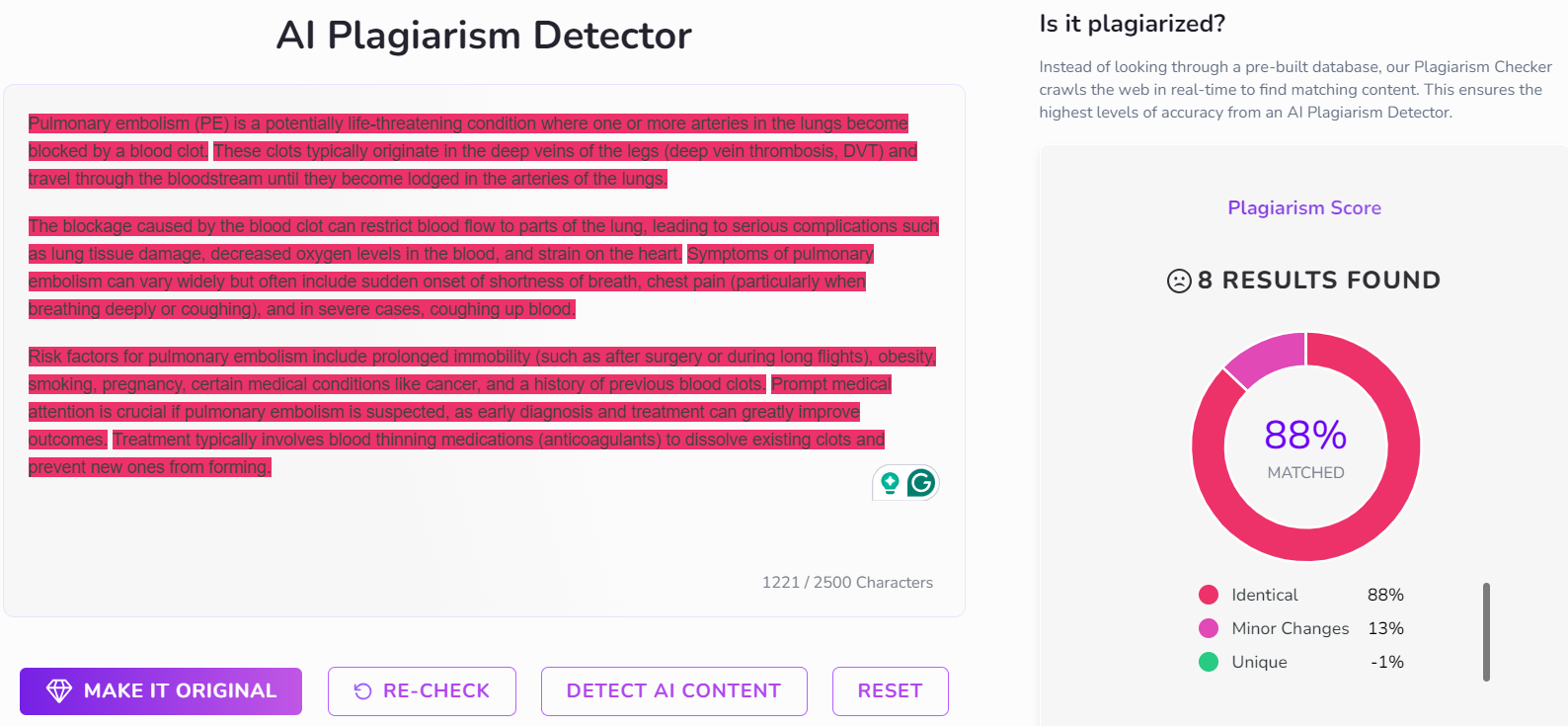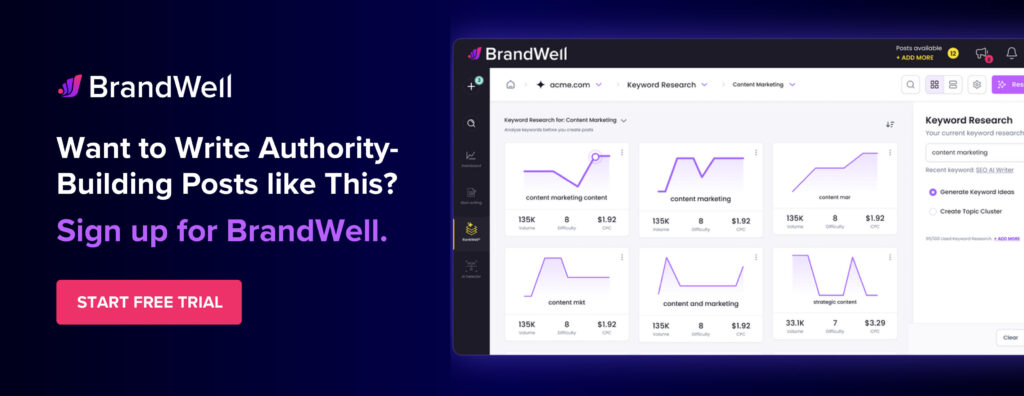Discover top guides, trends, tips and expertise from AIO Writers
What is Aggregate Plagiarism? How to Avoid This Sneaky Trap
Julia McCoy
Monday, 24th Jun 2024
Ever cobbled together a project by Frankenstein-ing bits and pieces from random websites, slapping on some citations, and calling it a day?
That’s what aggregate plagiarism is — a sneaky little monster lurking in the realm of research and content. It’s about the ratio of your own ideas to the ideas you’ve gathered from others.
Let’s dissect this citation chameleon and see why just throwing in sources isn’t enough!
Table Of Contents:
- What is Aggregate Plagiarism?
- How to Spot Aggregate Plagiarism
- Why Is Avoiding Aggregate Plagiarism So Important?
- Real-World Example of Aggregate Plagiarism
- Outsmart Aggregate Plagiarism: Craft Your Own Voice
- FAQs: What is Aggregate Plagiarism?
- Conclusion
What is Aggregate Plagiarism?
Aggregate plagiarism happens when you create a piece of writing by incorporating information from other sources, but without adding enough original analysis or ideas of your own.
Even though you cite your sources, the fact that the work lacks your own perspective makes it plagiarism.
Here’s a breakdown of what makes it problematic:
Little to no original content: The majority of the work is copied directly from other sources, even if cited.
Citations don’t justify the copying: Just including citations doesn’t make it okay to rely solely on other people’s work.
Imagine a research paper where you just copied and pasted paragraphs from different sources, one after the other, and added citations at the end. That would be a clear case of aggregate plagiarism.
This type of plagiarism is more subtle than directly copying and pasting someone else’s work. This is why so many students and writers accidentally fall into this trap.
How to Spot Aggregate Plagiarism
Imagine reading a history essay about the American Revolution. Every fact is technically accurate and properly sourced, but something feels off. Instead of offering a new perspective, the essay reads like a dry compilation of facts and quotes from other historians.
It feels more like a summary than an original piece of analysis. This is a telltale sign of aggregate plagiarism.
Recognizing it is the first step to avoiding it.
Let’s break down some red flags to help you avoid that situation:
Your Paper is More Summary Than an Analysis
If you’re simply restating what others have said without offering your own perspective, critique, or interpretation, you are dancing dangerously close to aggregate plagiarism. Your professors and readers want to know what you think about the topic. They don’t just want to know what everyone else has already stated.
Quotes Outweigh Your Own Voice
Quotes should be used sparingly and strategically to support your points. Quotes shouldn’t be used to make the argument for you. They’re like sprinkles on a cupcake: too many, and they overpower the flavor of everything else.
Aim for a good balance between quoted material and your own original writing. This ensures you are not plagiarizing anyone’s work.
You’re Not Really Engaging with Sources
This one is tricky because it involves digging a bit deeper than just checking for proper citations. Do you critically evaluate the sources you use?
Do you present different perspectives, even if they contradict your own? Or are you simply taking information at face value without adding your own layer of thought?
Engaging with your sources demonstrates that you understand the complexities of the topic and can synthesize information to form your own informed opinions. This is critical in academic settings and for building trust with your audience.
Why Is Avoiding Aggregate Plagiarism So Important?
It goes beyond just getting a good grade. Plagiarism, even the accidental kind, can have some nasty consequences.
Here’s why you should avoid aggregate plagiarism at all costs:
Breaks Trust and Hurts Credibility
When you rely solely on others’ ideas without adding your own analysis, it undermines the value of your work. Readers expect research to be a thoughtful exploration of a topic, not just a regurgitation of existing information. Aggregate plagiarism makes your work seem less credible and can damage your reputation as a researcher.
Hinders Your Learning
Research is a powerful tool for developing critical thinking skills. By simply copying and pasting, you miss out on the opportunity to analyze information, form your own conclusions, and engage with different perspectives. Avoiding aggregate plagiarism forces you to think critically about the information you gather, leading to a deeper understanding of the subject.
Disrespects the Original Authors
Imagine putting time and effort into research, only to have someone piecemeal your work together without acknowledging your contribution. Aggregate plagiarism diminishes the value of the original research and shows a lack of respect for the intellectual effort of others. Proper citation gives credit where it’s due and ensures everyone’s ideas are acknowledged.
Stays in the Shallow End
Research is a journey of discovery. When you avoid aggregate plagiarism, you’re forced to delve deeper into the topic, identify connections between sources, and develop your own unique perspective. This not only leads to a more insightful analysis but also pushes the boundaries of knowledge by building upon existing research.
In short, avoiding aggregate plagiarism benefits everyone. It fosters intellectual honesty, promotes critical thinking, and ensures everyone’s contribution is valued within the academic conversation.
Real-World Example of Aggregate Plagiarism
Remember “Ratzilla”, the monstrous rat that terrorized a family in Sweden? The story was an online sensation back in 2014, even making headlines in news outlets worldwide.
Joe Wilcox used Copyscape to compare the text of two different news articles, uncovering an interesting case of what appears to be aggregate plagiarism.
This real-world example demonstrates how quickly an article can seem original when, in reality, the author relied so heavily on the original reporting of The Local.
While the “Ratzilla” case doesn’t have the same severity as academic plagiarism, it highlights how important it is to prioritize originality in all writing, even news reporting.

Outsmart Aggregate Plagiarism: Craft Your Own Voice
Aggregate plagiarism might seem harmless – you cite your sources, right?
Wrong.
The problem is, when your work lacks your own analysis and critical thinking, it becomes a mashup of other people’s ideas.
Here are some key strategies to avoid this plagiarism pitfall:
Understand the Assignment Expectations
Always make sure you clearly understand what your instructor expects. Are they asking for a comprehensive overview or a fresh, argumentative analysis? Understanding this distinction is essential for how you approach your research and writing.
Deep Dive, Don’t Just Skim
Resist the urge to cherry-pick facts from the surface of your sources. Take time to understand the arguments different authors are making, the evidence they use, and any opposing viewpoints. This deeper understanding will allow you to integrate these sources in a meaningful way.
Paraphrase and Analyze, Don’t Just Copy-Paste
Sure, including quotes can be helpful, but relying solely on them makes your work derivative. Instead, paraphrase key points in your own words. This demonstrates you’ve grasped the information and allows you to seamlessly weave it into your own analysis.
Don’t forget to analyze the information! What does it mean for your topic? How does it support your argument?
Develop Your Own Argument
Think of your research sources as conversation starters, not scripts. Use them to inform and strengthen your unique perspective on the topic.
Don’t just summarize what others have said. Ask critical questions, identify connections between sources, and build your own argument based on the evidence you’ve gathered.
What is aggregate plagiarism’s biggest enemy? A strong, well-defined argument. Before you dive headfirst into the research, brainstorm your unique perspective on the topic. What are you trying to argue?
Having a solid thesis statement to guide your research and analysis will help prevent you from relying too heavily on other sources. Let your voice be the driving force of the paper, weaving in outside information as evidence to bolster your points.
Give Credit Where Credit is Due
This should almost go without saying, but making sure you consistently cite sources using the proper format is non-negotiable. Different academic fields and institutions require different citation styles (e.g., APA, MLA, Chicago).
Familiarize yourself with the specific style guide your assignment requires. Lucky for us, tons of resources are out there. You can even use online citation generators for additional peace of mind. When in doubt, over-cite rather than risk accusations of plagiarism.
Invest in a Plagiarism Checker (It’s Worth It.)
Sometimes we need an extra set of digital eyes to catch those sneaky bits of accidental plagiarism. Luckily, many free and paid plagiarism checkers are on the market.
Think of plagiarism detectors as an investment in your academic or professional success. These tools can compare your work against a vast database of online content, identifying passages that might be flagged as plagiarized.
One such tool is the BrandWell Plagiarism Detector. It’s the best plagiarism checker in terms of investment (it’s free to use) and results (you get a detailed analysis report).
Here’s how I used BrandWell to check for plagiarism in ChatGPT content:

Yikes 🤦♂️😫
While these tools are amazing for spotting potential issues, remember they shouldn’t be your only strategy. Nothing replaces a thorough understanding of proper citation practices and critical thinking when crafting original work.
By following these steps, you’ll transform your work from a collection of borrowed ideas to a well-reasoned and insightful analysis that reflects your own critical thinking.
Remember, research is a conversation, and your voice is an important part of it!
FAQs: What is Aggregate Plagiarism?
What is aggregator plagiarism?
Aggregate plagiarism and aggregator plagiarism are very similar terms and are sometimes used interchangeably. However, there is a subtle difference:
Aggregate plagiarism focuses on the content of your work. It occurs when you primarily rely on copied and pasted information from other sources, even if you cite them. There’s minimal to no original analysis or critical thinking from your own perspective. The key point is the lack of your own voice and contribution to the topic.
Aggregator plagiarism emphasizes the structure of your work. This term is less common, but it implies you’ve simply collected content from various sources and presented them together, like a news aggregator website that displays headlines from different sources. There might be some basic organization or curation, but again, minimal original analysis or contribution.
What are the four forms of plagiarism?
There’s no official list of “four types,” because plagiarism takes on many sneaky forms, but here are four common types that can help clarify what aggregate plagiarism is:
- Verbatim Plagiarism: Direct plagiarism is the most blatant form and involves copying someone’s work word-for-word without any attempt to disguise it.
- Patchwork Plagiarism: Also called mosaic plagiarism, this happens when someone patches together bits of information from different sources. They might change a few words here and there, making it a bit sneakier than direct copying, but it still involves stealing ideas.
- Paraphrasing Plagiarism: This occurs when someone rewords original material but doesn’t give credit to the original author. This can be tricky because even paraphrased content needs to be properly attributed.
- Aggregate Plagiarism: And, of course, we have our topic du jour—that tricky beast where even when you cite all your sources, you’ve relied too heavily on others’ ideas, making the work lack originality.
What is an example of hired plagiarism?
Hired plagiarism involves hiring someone to create original work and submitting it as your own. Think essay mills or those shady websites that promise stellar grades in exchange for payment.
Let me tell you, turning in work you didn’t do yourself—whether it’s a whole paper or just part of it— is a major no-no. This is a quick way to get yourself into a world of trouble and disciplinary action.
Conclusion
So, there you have it – the ins and outs of what is aggregate plagiarism. By focusing on developing good research habits, understanding how to properly paraphrase and cite your sources, and— most importantly— developing YOUR original voice and argument, you can avoid falling into common plagiarism traps and start creating work you are proud to put your name on.
Remember, originality is king. It reflects your ability to think critically and contribute something unique to your field, whether it’s an academic paper or content marketing strategies for businesses looking to succeed online.

UNLOCK YOUR POTENTIAL
Long Headline that highlights Value Proposition of Lead Magnet
Grab a front row seat to our video masterclasses, interviews, case studies, tutorials, and guides.



